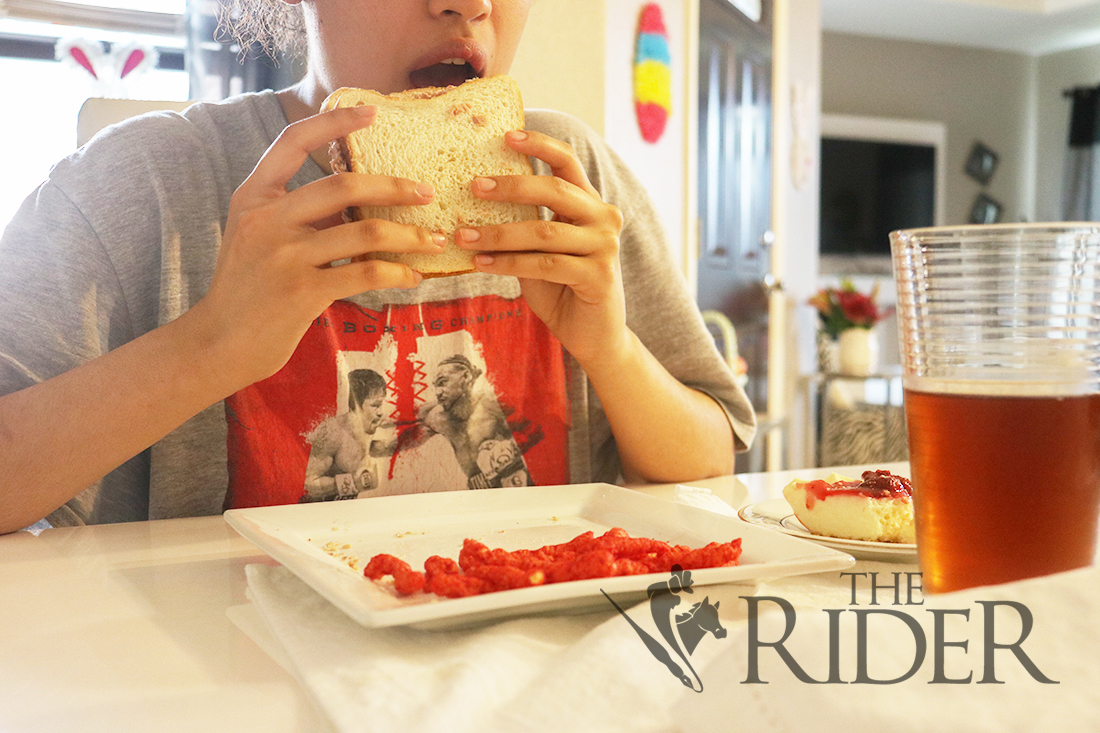
With a global pandemic and online classes, it’s easy to forget to take care of ourselves. However, students should stay active and eat right.
University Recreation is offering exercise sessions through Zoom so that students can stay fit while they shelter at home.
As of now, the weekly Virtual GX, or group exercise, schedule that UREC offers is
–Monday and Wednesday: Yoga at 12:15 p.m. and Zoomba at 5:30 p.m.
–Tuesday: Zoomba at 12:15 p.m. and Boxing Skills at 5:30 p.m.
–Thursday: Zoomba at 12:15 p.m. and Functional Strength at 5:30 p.m.
As long as students have access to Zoom and use their UTRGV credentials, they are encouraged to join a session, said Fay Kennan, fitness and wellness coordinator at University Recreation.
James Alegria, a UREC personal trainer, said attending a ZOOM session can help students with their emotions and keep them from eating out of boredom.
Working out is a way to avoid boredom, said Alegria, who teaches Boxing Skills on Tuesdays and Functional Strength on Thursdays.
Boxing helps students stay fit, improve their core and learn how to defend themselves. Functional strength helps improve not only the core, but the whole body. For students who are feeling tense staying at home, Zoomba can help with this stress, and yoga can help students relax, Alegria said.
“If you don’t know any workouts, I would recommend trying to get in … some of these classes,” he said.
At home, students can also try sit-ups, push-ups, Burpees and lunges, which don’t require any equipment. Students should work out five times a week for 45 minutes, Alegria said.
“You don’t need equipment,” he said, adding that the body is among the best equipment one can use.
Students should also find a support group, so they are more encouraged to not only workout during the Zoom sessions but also on other days. Support groups can consist of teammates, close friends, or something similar, Alegria said.
“Support groups is a great thing to have, not just to stay healthy, but also … to try to maintain [exercising daily] while you’re actually not in school,” he said.
Students who are starting a workout regimen at home should take it slowly, Kennan said.
“If something doesn’t feel right … pause, take a minute, regroup and then start again,” she said. “And always make sure you have the clearance from your physician to start any workout regimen.”
Students who already had a workout schedule should continue to keep it, Kennan said.
“Continue with that same schedule, but at home,” she said. “Make some space in your house, clear some room, and somewhere where you’re comfortable and safe … do your workout, whether it’s a workout from us, which we highly recommend … or whatever other outlet.”
Ethaniel Fierro, a kinesiology freshman and student athlete, is maintaining his workouts at home by using his treadmill and weights.
“I’ll just do, like, daily workouts in my garage and running daily and just trying to eat as best as I can,” he said.
Staying at home has limited his usual exercise patterns because he can no longer play soccer like he used to.
“I don’t really have the ability to be able to drive up to, like, a soccer field and get, like, necessary training that I need, or to be in, like, a group of people that will allow me to perform a certain way,” he said.
However, he tries to adjust to the situation as best as he can, and he recommends others do the same.
“[Students] just have to make the best of the situation … and just kind of work as hard as they can, like, during this whole quarantine stuff,” he said.
As for nutritious diets, students should ensure they are eating fruits and vegetables at every meal, said Rachel Villarreal, a clinical assistant professor and registered dietitian. For bread intake, whole grains and corn tortillas are recommended. Students can make regular oatmeal since they have time at home.
For healthy eating patterns, Villarreal recommends sticking to a schedule, and instead of avoiding certain foods, students should think about the type of foods they should eat.
“Try to go toward what you can have, instead of what you can’t have,” she said.
However, students should limit the amount of sugary and salty foods they eat, such as chips, sodas, cookies, etc., Villarreal said.
“Basically, things that are high in empty calories are not going to give you a lot of good nutrition to support your immunity,” she said. “Also, these things run up your grocery bill and, like, are more costly.”
During this time, students may struggle with access to grocery stores.They should consider alternatives to what they’re used to eating and find items that are “shelf stable,” Villarreal said.
“Sometimes it’s hard, like, to find exactly what you had before, but find some healthy alternatives to keep in your pantry that are very shelf stable that you can, you know, rely on,” she said.
Lately, people have been consuming vitamin C supplements because they believe it will protect them from COVID-19. A better alternative is to consume foods that have vitamin C, such as citrus, broccoli and red peppers. Vitamin C won’t lessen your chances of getting the virus, but it can be seen as a “kind of a backup plan” in conjunction with other medication, Villarreal said.
“Just eat the foods on a daily basis,” she said.” And that’ll do the same thing, you know, or even better than taking, like, vitamin C in a supplement form.”
Students can join the exercise Zoom sessions with the meeting ID: 211-760-632.
For updates from University Recreation, students can visit its Facebook page at https://www.facebook.com/UTRGVUREC/.







